Making a perfect espresso is an art and science, with grind size playing a crucial role in the process. Knowing how to adjust espresso grind for your espresso beans can transform your brew from merely good to absolutely sublime. This step-by-step guide will delve into why grind adjustment is essential and how you can master this skill to elevate your espresso-making game.
Importance of Grind Adjustment
The grind size of your coffee beans directly affects the flavor, texture, and overall quality of your espresso. A grind that’s too coarse can result in a weak, under-extracted shot, while a grind that’s too fine can lead to a bitter, over-extracted brew. Finding the perfect balance ensures that you extract the best flavors from your beans, creating a rich, smooth, and aromatic espresso.
With this guide, you’ll learn the importance of grind adjustment and gain practical tips on achieving that ideal grind for a consistently delicious espresso.

Understanding Espresso Grind
- Fine Grind: Ideal for espresso, a fine grind increases the surface area of the coffee, allowing for faster and more efficient extraction of flavors. This produces a rich, intense shot.
- Medium Grind: Typically used for drip coffee, a medium grind is too coarse for espresso, leading to under-extraction and weak, sour shots.
- Coarse Grind: Used for methods like French press, a coarse grind results in very slow extraction and is unsuitable for espresso, yielding a bland and watery brew.
- Grind Consistency: Consistency in grind size ensures even extraction, preventing over-extracted bitter flavors or under-extracted sour notes.
- Adjusting for Flavor: Fine-tuning your grind size helps balance the flavors, enhancing the nuanced notes of your coffee, from fruity to chocolatey.
The Science of Coffee Grinding
Coffee grinding is all about achieving the right extraction rate. The grind size controls how quickly water passes through the coffee grounds. A finer grind increases the surface area, speeding up extraction, while a coarser grind slows it down. The extraction process dissolves various compounds in the coffee, affecting acidity, sweetness, and bitterness.
Proper grind adjustment harmonizes these elements, ensuring that each shot of espresso is rich, balanced, and full of complex flavors. Understanding this relationship helps you tweak your grind to suit different beans and brewing conditions, perfecting your espresso-making technique.
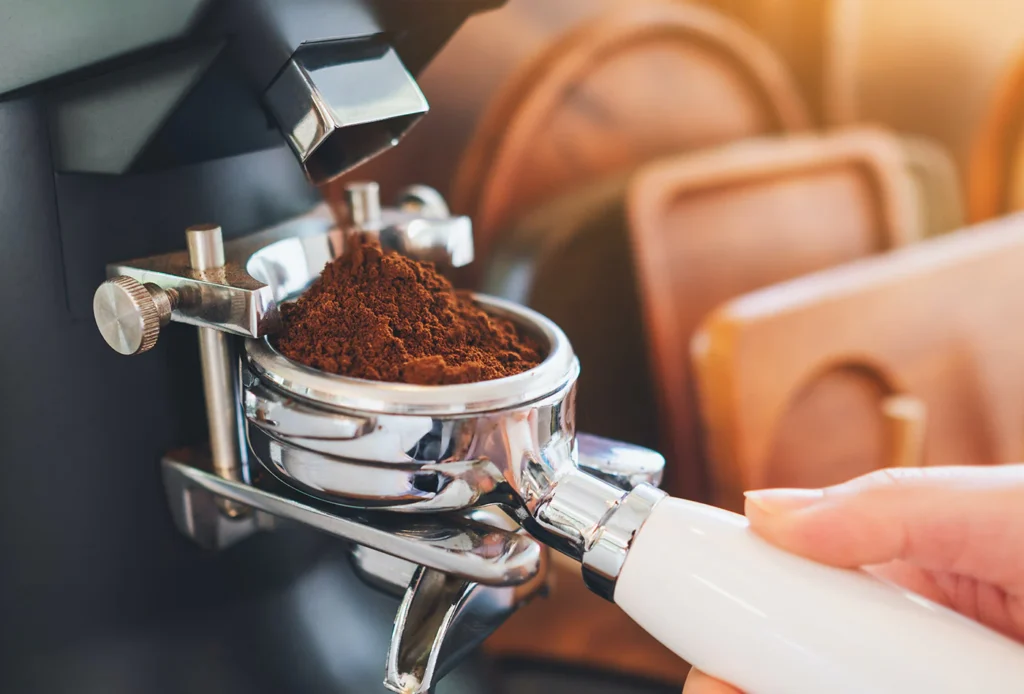
alumni.uod.ac
Tools Needed for Grind Adjustment
- Burr Grinder: Essential for precise grind size adjustment, burr grinders offer consistent and uniform coffee grounds, which is crucial for espresso.
- Grind Size Indicator: Many grinders come with a grind size indicator, helping you easily adjust to the desired fineness.
- Scale: A digital scale ensures accurate measurement of coffee grounds, which is important for consistency in your espresso shots.
- Timer: Timing your grind helps in achieving uniform extraction and consistency in every shot.
- Brush: A small brush helps in cleaning the grinder, ensuring there’s no residual coffee affecting your grind size.
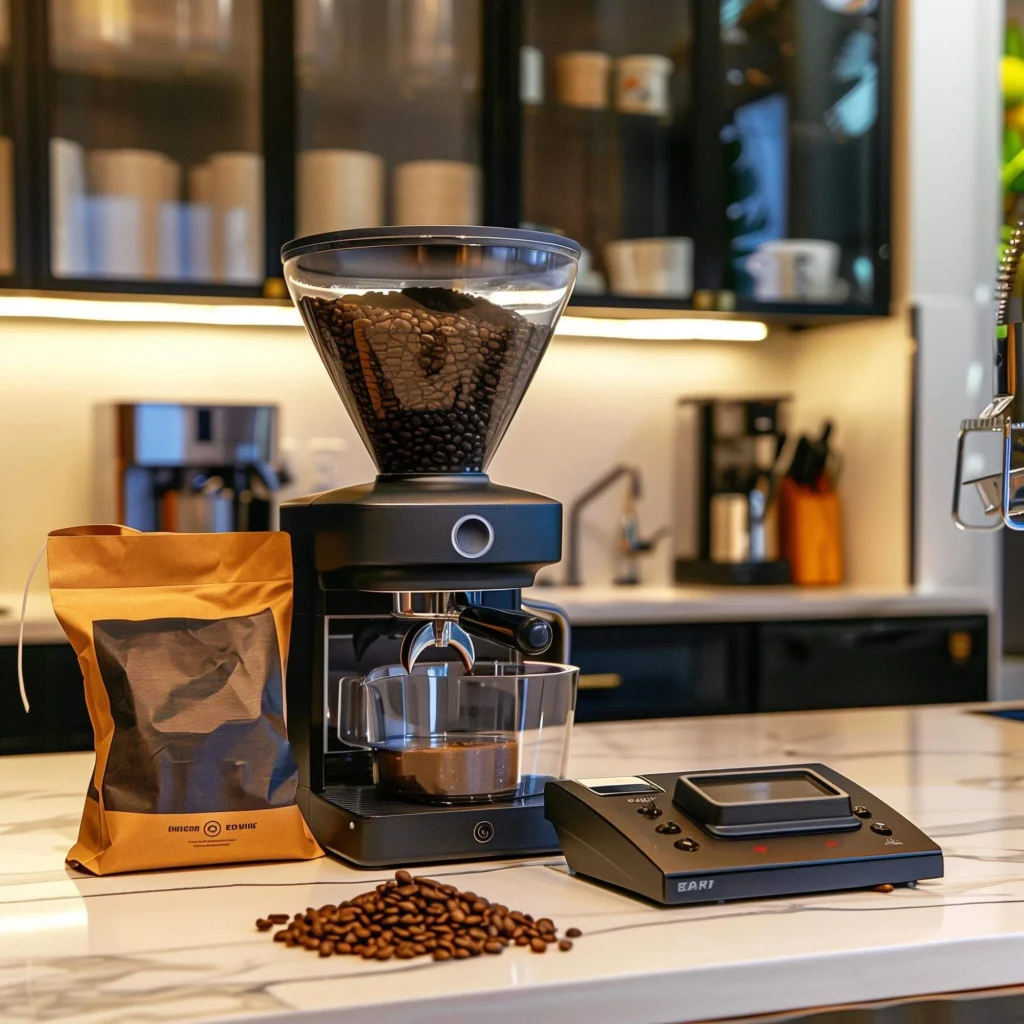
Choosing the Right Grinder
- Manual Grinders: Affordable and portable, manual grinders are great for those who enjoy the hands-on approach. They offer precise grind control but can be time-consuming.
- Blade Grinders: Generally not recommended for espresso due to inconsistent grind sizes, which can lead to uneven extraction.
- Flat Burr Grinders: These grinders provide a very consistent grind, making them ideal for espresso. They are typically more expensive but worth the investment for serious espresso enthusiasts.
- Conical Burr Grinders: Known for their ability to produce uniform grounds, conical burr grinders are quieter and often more affordable than flat burr grinders, making them a popular choice for home baristas.
- Grind Size Settings: Look for grinders with multiple grind size settings to fine-tune your espresso grind for the best possible extraction and flavor.
Step-by-Step Guide to Adjusting Your Espresso Grind
Achieving the perfect espresso grind requires careful adjustment and testing. Follow these steps to fine-tune your grind for a rich and flavorful shot:
Step 1: Measure Your Coffee
Use a digital scale to weigh out the coffee beans accurately. Aim for about 18-20 grams of coffee for a double shot. Consistent measurement ensures uniformity in your brewing process.
Step 2: Adjust the Grinder Settings
Set your burr grinder to a fine grind. If your shot is too quick or too slow, adjust the grind size in small increments. Finer for slower extraction and coarser for faster extraction.
Step 3: Test and Tweak
Brew a test shot and observe the extraction time and flavor. Ideal extraction should be between 25-30 seconds. Tweak the grind size as needed, making minor adjustments until you achieve the perfect balance of taste and extraction.
Troubleshooting Common Grind Adjustment Issues
Under-Extraction
- Symptoms: Sour taste, quick extraction (less than 25 seconds).
- Solution: Adjust to a finer grind to slow down the extraction process and increase contact time between water and coffee.
Over-Extraction
- Symptoms: Bitter taste, slow extraction (more than 30 seconds).
- Solution: Adjust to a coarser grind to speed up the extraction and reduce contact time.
Channeling
- Symptoms: Uneven extraction, watery and weak taste.
- Solution: Ensure even distribution and tamping of coffee grounds. Check for consistent grind size and clean your grinder regularly.
When to Adjust Again
- Changing Beans: Different beans have different densities and moisture levels, requiring grind adjustments.
- Environmental Changes: Humidity and temperature can affect coffee beans. If the weather changes significantly, consider re-adjusting the grind.
- Machine Performance: If your espresso machine starts behaving differently or shots are inconsistent, it might be time to tweak the grind.
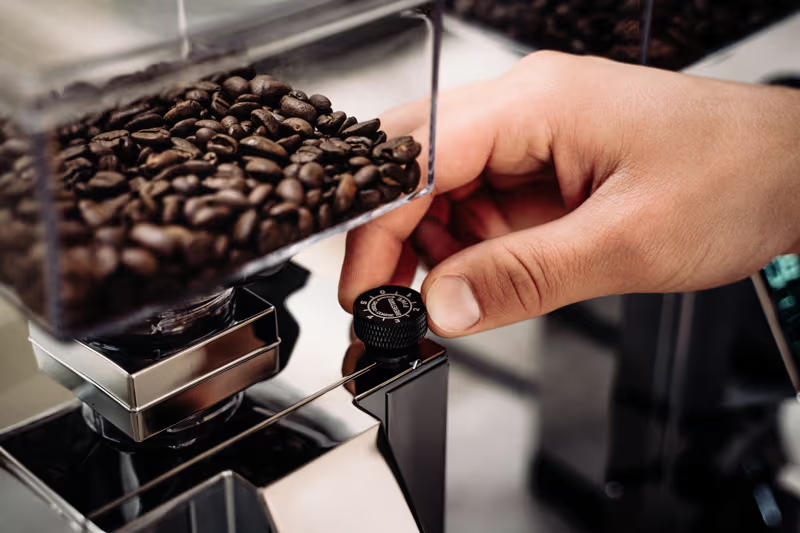
Keep an eye on the flavor and extraction time of your shots, and don’t hesitate to make small adjustments as needed.
Advanced Tips for Baristas
- Single Dosing: Measure out your coffee for each shot to maintain consistency and reduce waste.
- Dialing In: Make micro-adjustments to the grind size and track the results. Note the grind settings for different beans and conditions.
- Pre-infusion: Use pre-infusion to wet the coffee evenly, helping to prevent channeling and ensuring a uniform extraction.
- Consistent Tamping: Apply consistent pressure while tamping to avoid uneven extraction and channeling.
Maintaining Your Grinder
- Regular Cleaning: Clean your grinder weekly to remove coffee oils and residues that can affect grind consistency.
- Calibrate Periodically: Recalibrate your grinder to ensure it maintains the correct grind size settings.
- Replace Burrs: Check and replace the burrs as needed to keep your grinder performing at its best.
- Avoid Moisture: Keep your grinder in a dry place to prevent coffee clumping and damage to the grinder.

Disclosure: Our blog contains affiliate links to products. We may receive a commission for purchases made through these links. However, this does not impact our reviews and comparisons. We try our best to keep things fair and balanced, in order to help you make the best choice for you.

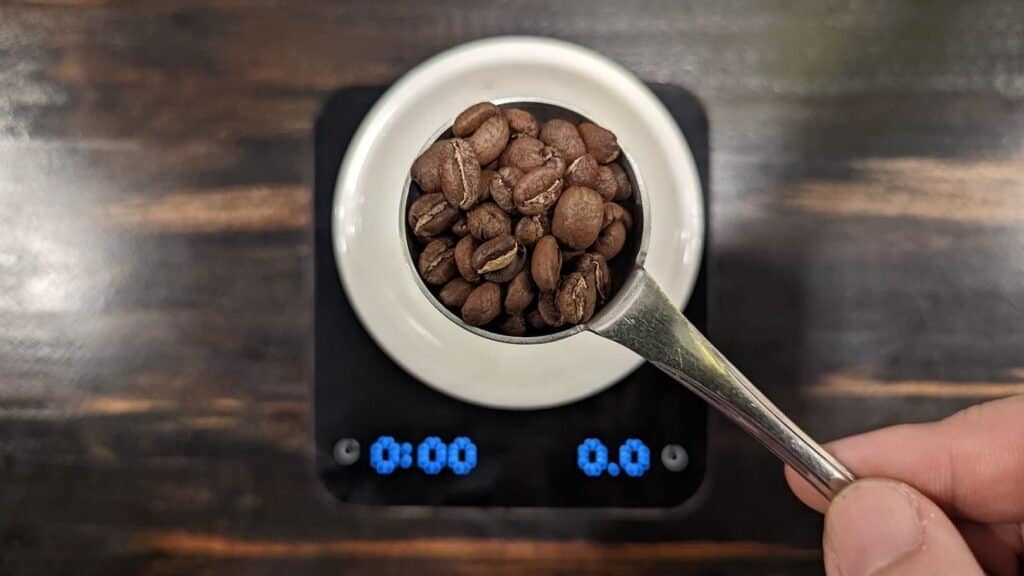

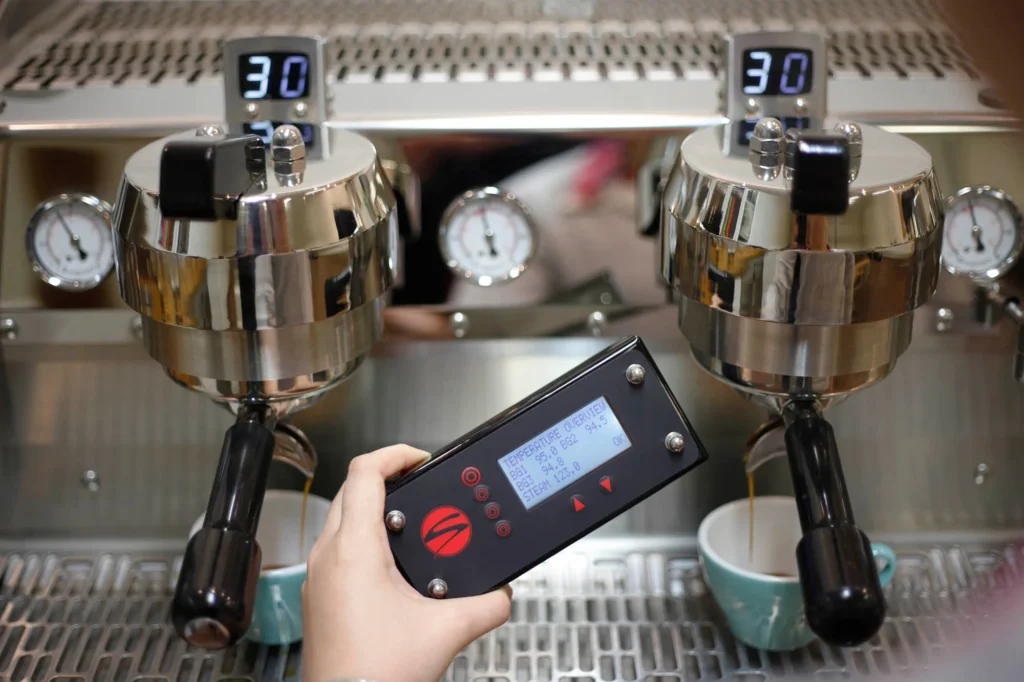

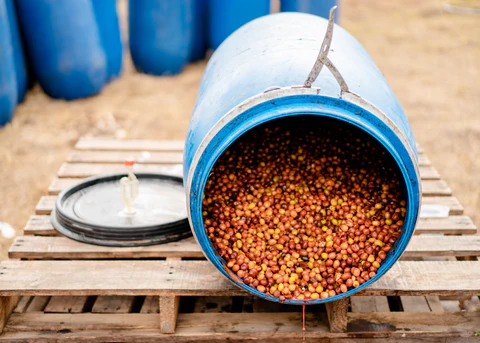



2 Responses